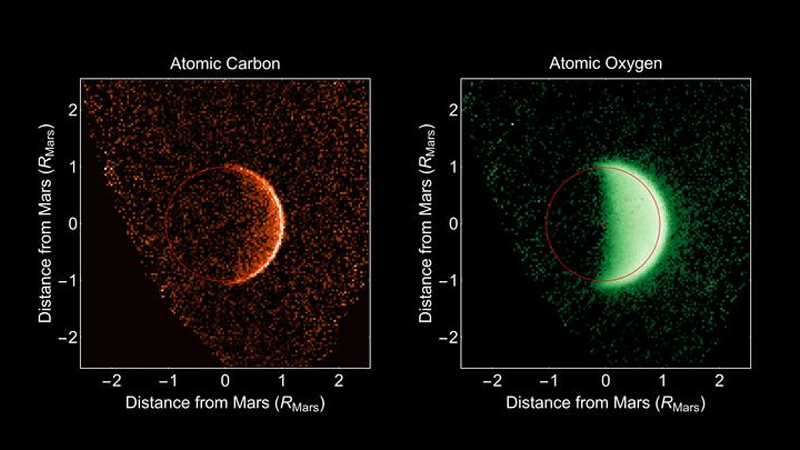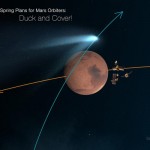
NASA’s latest mission to Mars, MAVEN (Mars Atmospheric and Volatile Evolution), entered Martian orbit less than a month ago on September 21. It’s already begun to reward us with revealing insights into the disappearance of Mars’ atmosphere.
MAVEN is the first spacecraft designed to investigate Mars’ outermost atmospheric sheath, the rarified “corona” of gases that come into direct contact with the solar wind, the stream of electrically charged gases blown off by the sun.
Until now, robotic missions have been concerned with Mars’ surface conditions: composition of rocks and soil, mineral deposits, topography, sedimentary layering, and surface weather and climate, not to mention keeping an eye out for signs of life, past or present.
The intensive investigation of Mars’ surface over the decades not only introduced us to a cold, dry desert planet, but also revealed that it wasn’t always so. Long ago in Mars’ past, the evidence tells us, the climate was much more Earth-like: a thicker, warmer atmosphere, lakes and seas of liquid water, precipitation and runoff. And, most tantalizing of all, conditions suitable for sustaining some form of life.
The stark difference between the planet we see today and the world of the past that we have reconstructed posed the question, what happened to change Mars so drastically?

